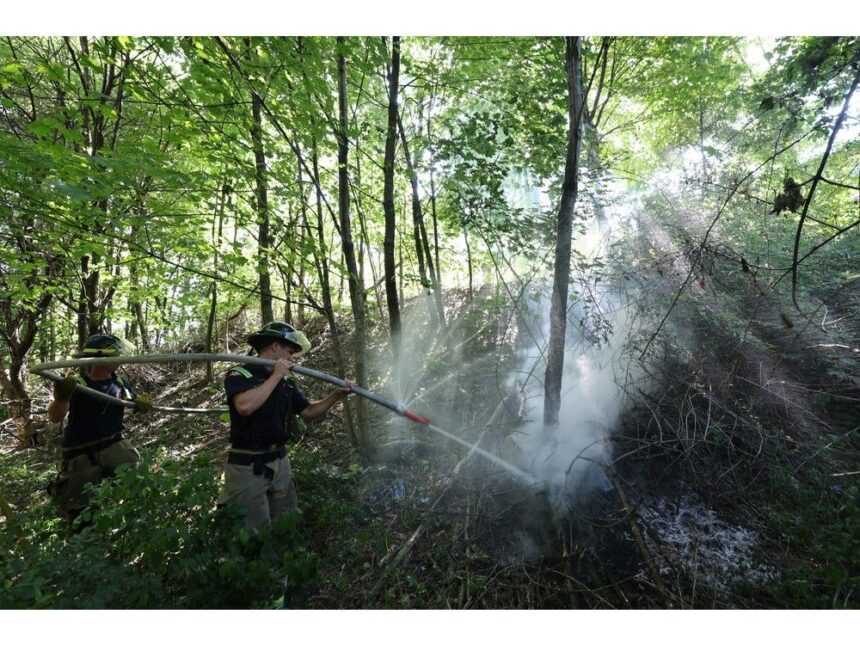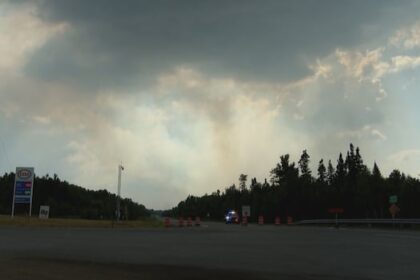Halifax regional firefighters knocked down a small fire in the woods near 2 Penhorn Drive in Dartmouth, Thursday, August 7, 2025. The cause is unknown as of yet. The fire weather index across the province was extreme on Friday, meaning there was a substantial risk that fire that broke could be intense and spread quickly. Photo by Tim Krochak /the Chronicle HeraldArticle contentAs the ban on open fires and travel in the woods continues, some people continue to question the risk of a fire, even when the weather changes slightly.THIS CONTENT IS RESERVED FOR SUBSCRIBERS ONLY.Subscribe now to access this story and more:Unlimited access to the website and appExclusive access to premium content, newsletters and podcastsFull access to the e-Edition app, an electronic replica of the print edition that you can share, download and comment onEnjoy insights and behind-the-scenes analysis from our award-winning journalistsSupport local journalists and the next generation of journalistsSUBSCRIBE TO UNLOCK MORE ARTICLES.Subscribe or sign in to your account to continue your reading experience.Unlimited access to the website and appExclusive access to premium content, newsletters and podcastsFull access to the e-Edition app, an electronic replica of the print edition that you can share, download and comment onEnjoy insights and behind-the-scenes analysis from our award-winning journalistsSupport local journalists and the next generation of journalistsRegister to unlock more articles.Create an account or sign in to continue your reading experience.Access additional stories every monthShare your thoughts and join the conversation in our commenting communityGet email updates from your favourite authorsSign In or Create an AccountorArticle contentSo what exactly is the risk?Article contentArticle contentThe first thing people need to understand that when the Department of Natural Resources is talking about the fire risk, it’s not about how likely it is that a wildfire will start. It’s how likely it is that a fire will spread quickly.Article contentArticle contentHow is the risk of rapid spread determined?Article contentThe department has multiple measuring sticks that help it determine what the risk is, and all of those are combined to create a fire weather index which is a numerical rating of fire intensity should a fire occur. It is also a general index of fire danger throughout forested areas.Article contentHow bad is it right now?Article contentAnything over a rating of 23 is considered an extreme risk. On Friday, the index was at 36.1, where it has been fore days,Article contentWhat factor go into the index?Article contentThese are the measurements used, with the threshold for extreme and the measurements on Friday, as per DNR:Article contentFine fuel moisture code (FFMC): the moisture content of dead leaves, needles, grass, and other such fuels. It is an indicator of the relative ease of ignition and flammability of fine fuel. Extreme level is 91, Friday it was 93.5.Article contentDuff moisture code (DMC): is the moisture content of loosely compacted organic layers of moderate depth. This code gives an indication of fuel consumption in moderate duff layers and medium-size woody material. The extreme level is 55. Friday it was 76.7Article contentArticle contentDrought code (DC): A rating of the average moisture content of deep, compact, organic layers. This code is a useful indicator of seasonal drought effects on forest fuels, and amount of smouldering in deep duff layers and large logs. The extreme level is 430. Friday it was 424.5Article contentInitial spread index (ISI): a rating of the expected rate of fire spread. It combines the effects of wind and FFMC on rate of spread without the influence of variable quantities of fuel. The extreme level is 18. Friday it was 11.8Article contentBuildup index (BUI): a numerical rating of the total amount of fuel available for combustion that combines DMC and DC. The extreme level is 76. Friday it was 105.7.Article contentIf one those numbers improves, doesn’t it help?Article contentScott Tingley, the manager of forest protiection for the province, says yes, in a way. The FFMC and ISI are going to fluctuate daily because they are affected by humiditgy, wind and temperatures more so than the others, while the DMC and DC are affected by long periods of rain. Humidity or light rain will not improve the DMCV or DC.
Determining wildfire risk: What is measured and what does it mean?











